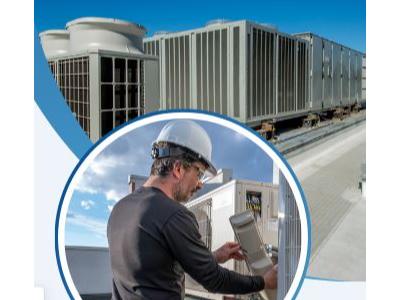
Key differences in the HVAC design for healthcare versus a standard HVAC design?
Designing HVAC systems for healthcare facilities requires special considerations compared to standard HVAC designs. Here are some key differences:
1. Air Quality and Filtration: Healthcare facilities need superior air quality to prevent the spread of infections. This involves using high-efficiency particulate air (HEPA) filters and considering more advanced filtration techniques. Additionally, the HVAC system should be designed to manage airborne pathogens effectively.
2. Airflow Control: In healthcare settings, controlling the direction, speed, and pattern of airflow is crucial. For instance, operating rooms require a laminar airflow system to reduce the risk of airborne contaminants. Also, isolation rooms need negative pressure to prevent contaminated air from escaping into other areas.
3. Temperature and Humidity Control: Precise control of temperature and humidity is essential in healthcare environments. Certain areas, like operating rooms, require specific temperature and humidity levels for patient safety and to control the growth of microbes.
4. Redundancy and Reliability: Healthcare facilities often require redundant systems to ensure that HVAC services remain operational in case of a failure. This might include backup power sources and additional capacity to handle emergency situations.
5. Energy Efficiency and Sustainability: While energy efficiency is a concern in all modern HVAC systems, in healthcare facilities, this must be balanced with the need for constant air changes and high levels of filtration, which can be energy-intensive.
6. Compliance with Healthcare Standards: Healthcare facilities are subject to specific regulations and standards, such as those from the American Society of Heating, Refrigerating and Air-Conditioning Engineers (ASHRAE) and the Facility Guidelines Institute (FGI). These standards cover aspects like air change rates, filtration requirements, and room pressure relationships.
7. Noise Control: HVAC systems in healthcare facilities should be designed to minimize noise as it can impact patient recovery and the work environment for staff. This can involve using low-noise equipment and designing ductwork to reduce sound transmission.
8. Flexibility and Adaptability: Healthcare facilities often need to adapt to changing needs, such as converting a general patient room to an isolation room. The HVAC system should be flexible enough to accommodate these changes without major renovations.
9. Maintenance and Accessibility: Regular maintenance is vital for keeping the HVAC system in a healthcare facility running efficiently and safely. Therefore, the system should be designed for easy access to filters and other components that require routine maintenance.
Each of these aspects requires careful consideration and planning by experienced engineers and architects to ensure that the HVAC system meets the unique demands of a healthcare environment.






